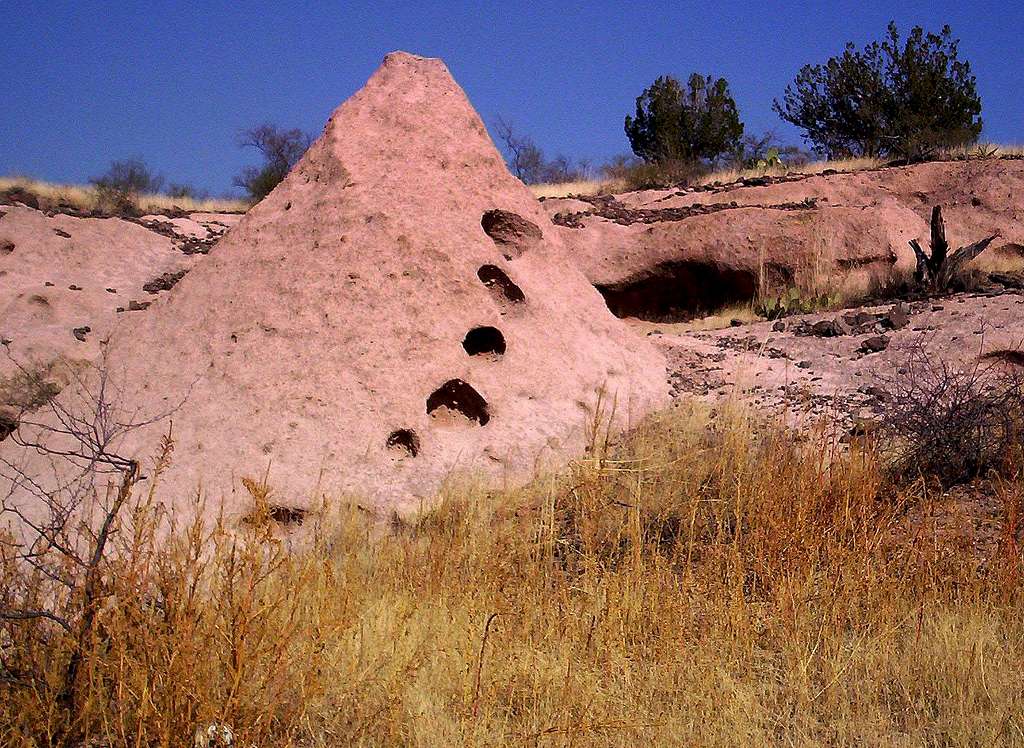yatsek - Nov 28, 2008 8:50 am - Voted 10/10
Breccia or Conglomerate?Really Bizarre, Larry. I wonder if you could get and share more info about these formations. As you say the rock feels like limestone, I reckon that'll actually be breccia (here - the stones seem to have sharp edges) or conglomerate (in some of the other pics from this area, e.g. the cliffs of the Verde Valley) cemented by calcium carbonate.
Cheers,
Jacek
lcarreau - Nov 28, 2008 11:41 am - Hasn't voted
Re: Breccia or Conglomerate?I have studied (though not completely familiar with) the "Karst" regions of central Europe.
The limestone there seems to be a much purer
"white" in colour.
The rock you see here was laid down (as silt)
at the bottom of a shallow lake. The ancient
lake (which filled the entire Verde Valley)
rose and fell several times, creating
consecutive layers of stratum.
At the same time, several volcanoes were
erupting in the area. An imposing layer of
volcanic ash fell upon these deposits.
"Breccia" is considered to be a much darker
material. What we have here is an "easily
erodible" limestone formation, which is not
as white as typical limestone because of the
volcanic ash it contains.
As far as the percentage of calcium it contains, I have no idea. My guess would be
that some of it has already dissolved over
the millennium. And yes, in the past this
area contained much more water than it does
today.
Larry
yatsek - Nov 28, 2008 2:00 pm - Voted 10/10
Re: Breccia or Conglomerate?Thanks a lot, Larry, now it's quite clear.
The color doesn't matter – as long as we're not talking of beauty or politics :)) – I also have some beloved Red (limestone) Rocks here in Poland; just take a glance at my comments on this: http://www.summitpost.org/album/175234/my-small-mountains-spiskie-rocks.html
The point is that both conglomerate and breccia are clastic, and contain grains of various size, even boulders.
I'm not keen on arguing about terms, I just want to understand the process. Right, volcanic rocks are in the picture (and the others :-) plus calcareous material – the way I see it, ash and volcanic bombs must've played an important part in the production of this AZ's
cheese:)
Jacek
lcarreau - Nov 28, 2008 4:01 pm - Hasn't voted
Re: Breccia or Conglomerate?Yes, you couldn't be more right in your comment! There are MANY examples of conglomerate and breccia in the walls of the
Grand Canyon, but I have not witnessed such
examples in central Arizona.
Volcanic ash & bombs have played a very
distinct role in affecting the limestone deposits and landscape of central & northern Arizona!!
I will be posting further pictures depicting some of the "geological features" of this area.
Dziekuja, Jacek, for your valuable comments and votes!









Comments
Post a Comment